HTML
--> --> -->In Lattice QCD, the susceptibilities of conserved charges, e.g., baryon number B, strangeness S, and electric charge Q, are defined as
$ \chi_{lmn}^{BSQ} = \frac{\partial^{\,l+m+n}(P/T^4)}{\partial(\mu_{B}/T)^{l}\partial(\mu_{S}/T)^{m}\partial(\mu_{Q}/T)^{n}}, $  | (1) |
$ \chi_2/\chi_1 = \sigma^2/M; \chi_3/\chi_{2} = \; S\sigma; \chi_4/\chi_{2} = \kappa\sigma^2. $  | (2) |
$ M = K_1 = \langle X\rangle, $  | (3) |
$ \sigma = \sqrt{K_2} = \sqrt{\langle (X-M)^{2}\rangle }, $  | (4) |
$ S = \frac{K_3}{K_2^{3/2}} = \frac{\langle(X-M)^{3}\rangle} {\sigma^3}, $  | (5) |
$ \kappa = \frac{K_4}{K_2^{2}} = \frac{\langle (X-M)^{4}\rangle} {\sigma^4}-3,$  | (6) |
The BNL Relativistic Heavy Ion Collider (RHIC) has been performing a Beam Energy Scan program [33-35] with the objective of determining the critical point of the QCD phase diagram [7]. Several moment types of net-proton, net-strangeness, and net-charge have been reported [30,35-40]. As the proxy of the baryon number, a non-monotonic energy dependence
In this study, we focus on the dynamical evolution of the moments of net-charge multiplicity distribution using a multi-phase transport model, because heavy-ion collisions comprise dynamical evolution stages that exist between the Lattice QCD calculation and final experimental measurement. This paper is organized as follows. We introduce the AMPT model and our method of calculating moments in Section II. Our results and discussions are presented in Section III. Finally, a summary is presented in Section IV.
A.The AMPT model
A multiphase transport model (AMPT), has been widely used to investigate several aspects of the physics of relativistic heavy-ion collisions [41-45]. The AMPT model with a string melting mechanism [41] primarily comprises four stages: initial condition, partonic cascade, hadronization, and hadronic rescatterings. The initial condition obtained from the HIJING model [46,47] primarily provides the spatial and momentum distributions of minijet partons and soft strings. Under the string melting mechanism, both excited strings and minijet partons are melted into partons, i.e. decomposed into constituent quarks according to their flavor and spin structures. The strong interactions among partons are simulated by Zhang's parton cascade model [48], which includes elastic partonic scatterings with a fixed cross section (3 mb). A simple quark coalescence model describes the conversion of these partons to hadrons, i.e. hadronization. The ART model simulates interactions among the hadrons and corresponding inverse reactions, as well as resonance decays [49]. In old versions of the AMPT model, charge conservation is violated owing to certain problems [50]. In this study, a new version of the AMPT model, which ensures the strict conservation of charge for each hadronic reaction channel, is used to investigate the net-charge fluctuations. To study the energy dependence of the moments of net-charge fluctuations, we simulated Au+Au minus bias collisions for seven different energies (2
B.Calculation method
The mean (M), standard deviation (In addition, the initial volume fluctuations can contribute to the moments as a background, which can induce a centrality bin width effect (CBWE) [29,31] and a centrality resolution effect (CRE) [31]. The CBWE is triggered by the finite width of the centrality bin. In other words, if the width of centrality bin is sufficiently small, the influence of the CBWE will be weakened. The CRE originates from the uncertainty of the collision centrality determination, as different initial collision geometries will trigger the uncertainty of results. To reduce the contribution of these background effects, the centrality bin width correction (CBWC) and centrality resolution correction (CRC) are applied in a similar manner to the experiments in [29,31,32]. We compare the results with and without the CBWC and CRC in subsections IIIA and IIIB, respectively.
A.Centrality bin width effect and correction
To eliminate the influence of the CBWE, CBWC has been proposed [29,31,32]. This method is defined as $ X = \frac{\displaystyle\sum_{r}n_{r}X_{r}} {\displaystyle\sum_{r}\ n_{r}}, $  | (7) |
In order to clearly see the influence of the CBWE on moments, the results without and with the CBWC are compared. Figure 1 presents the centrality dependences of the mean (M) and standard deviation (
 Figure1. (color online) Centrality dependence of mean (M) (top plots) and standard deviation (
Figure1. (color online) Centrality dependence of mean (M) (top plots) and standard deviation (Figure 2 illustrates the centrality dependences of the skewness (S) and kurtosis (
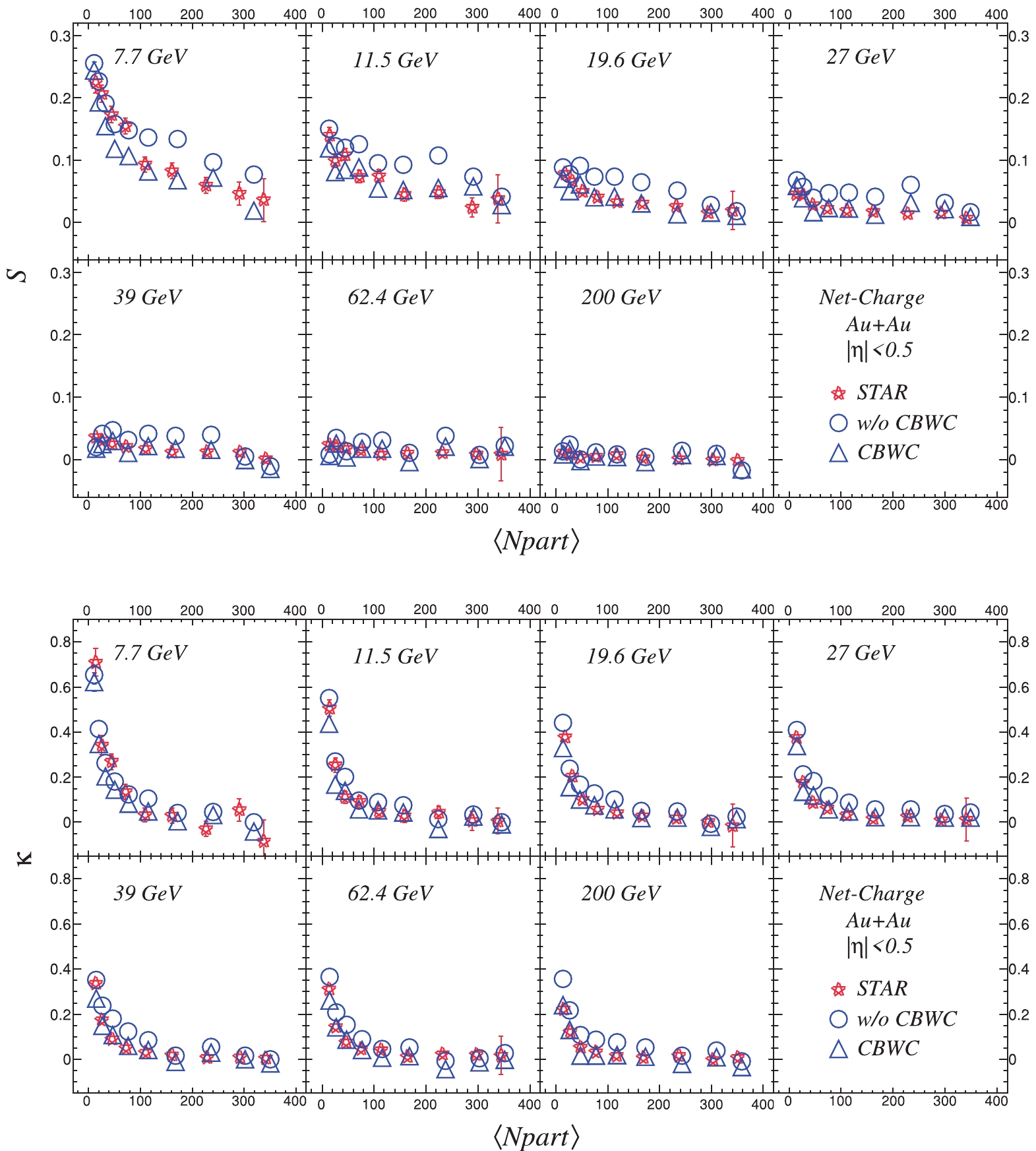 Figure2. (color online) Centrality dependence of skewness (S) (top plots) and kurtosis (
Figure2. (color online) Centrality dependence of skewness (S) (top plots) and kurtosis (Figure 3 presents the centrality dependence of
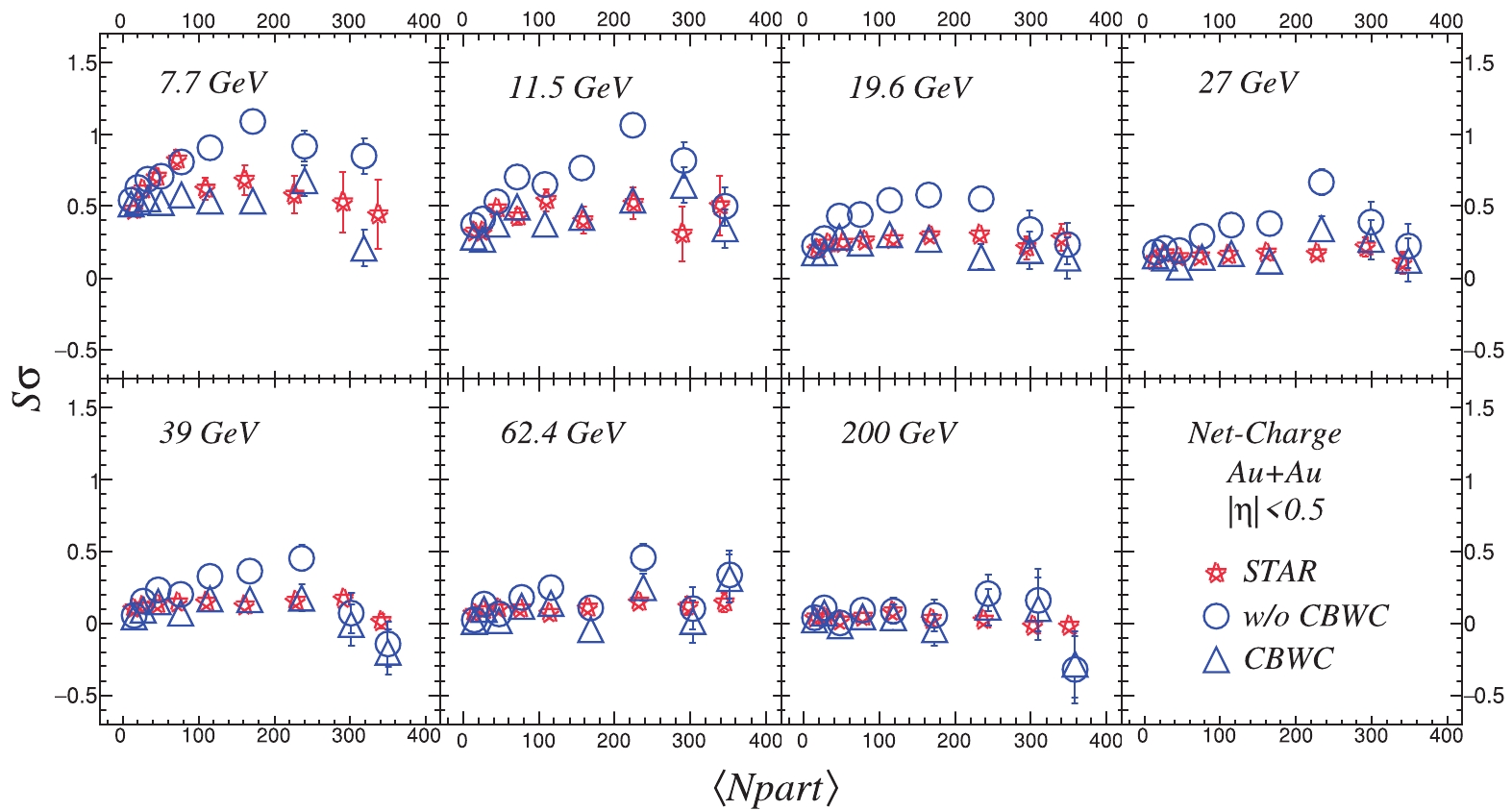 Figure3. (color online) Centrality dependence of moment products
Figure3. (color online) Centrality dependence of moment products Figure 4 presents the dependence results of the
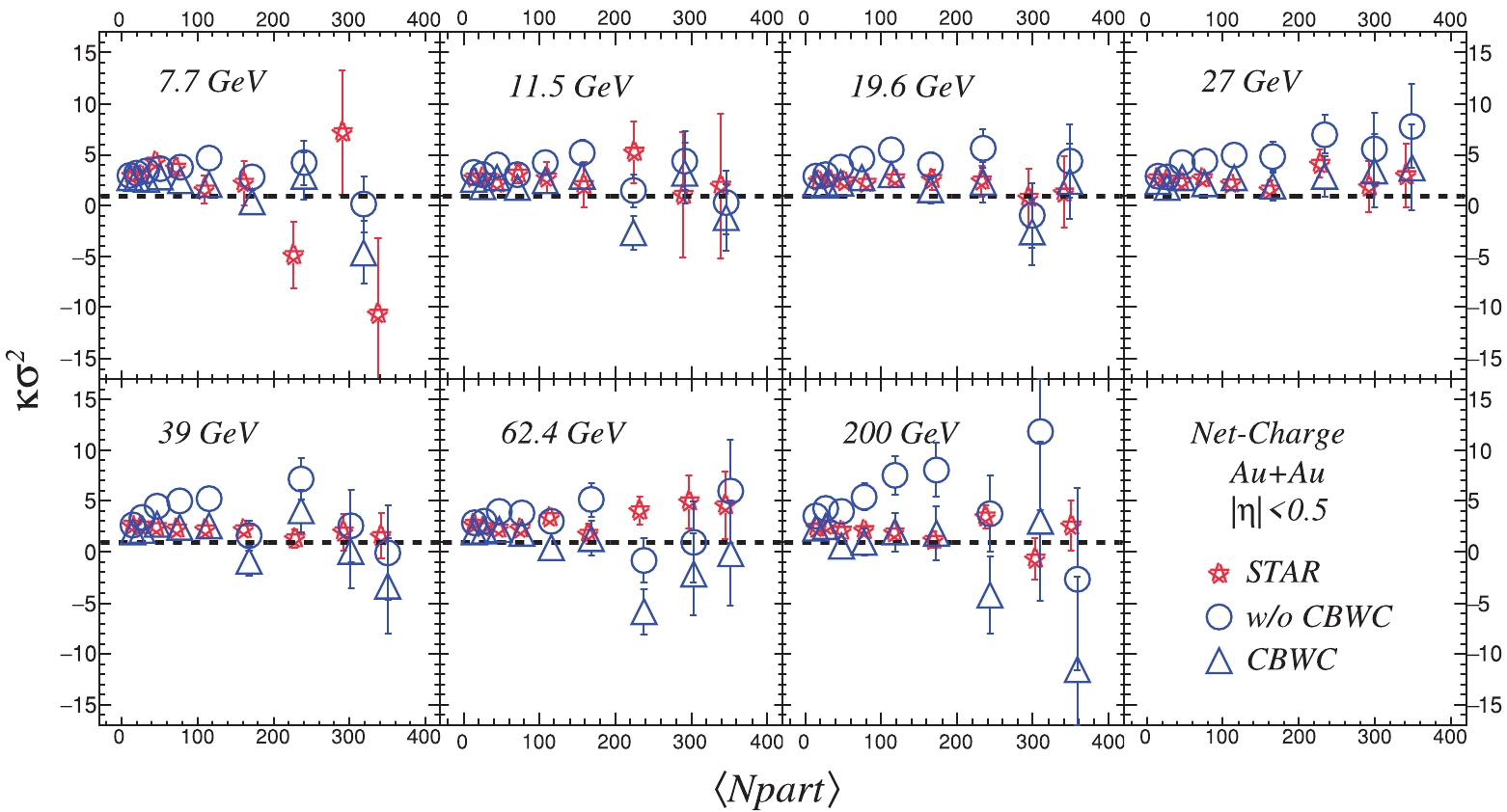 Figure4. (color online) Centrality dependence of moment products
Figure4. (color online) Centrality dependence of moment products 2
B.The centrality resolution effect and correction
We also study the influence of the centrality resolution effect (CRE) on the moments and moment products of net-charge multiplicity distributions in Au+Au collisions. Because the CRE is induced by the initial volume fluctuations of the impact parameter or collision centrality, using differentFigure 5 illustrates the centrality dependence of the mean (M) and standard deviation (
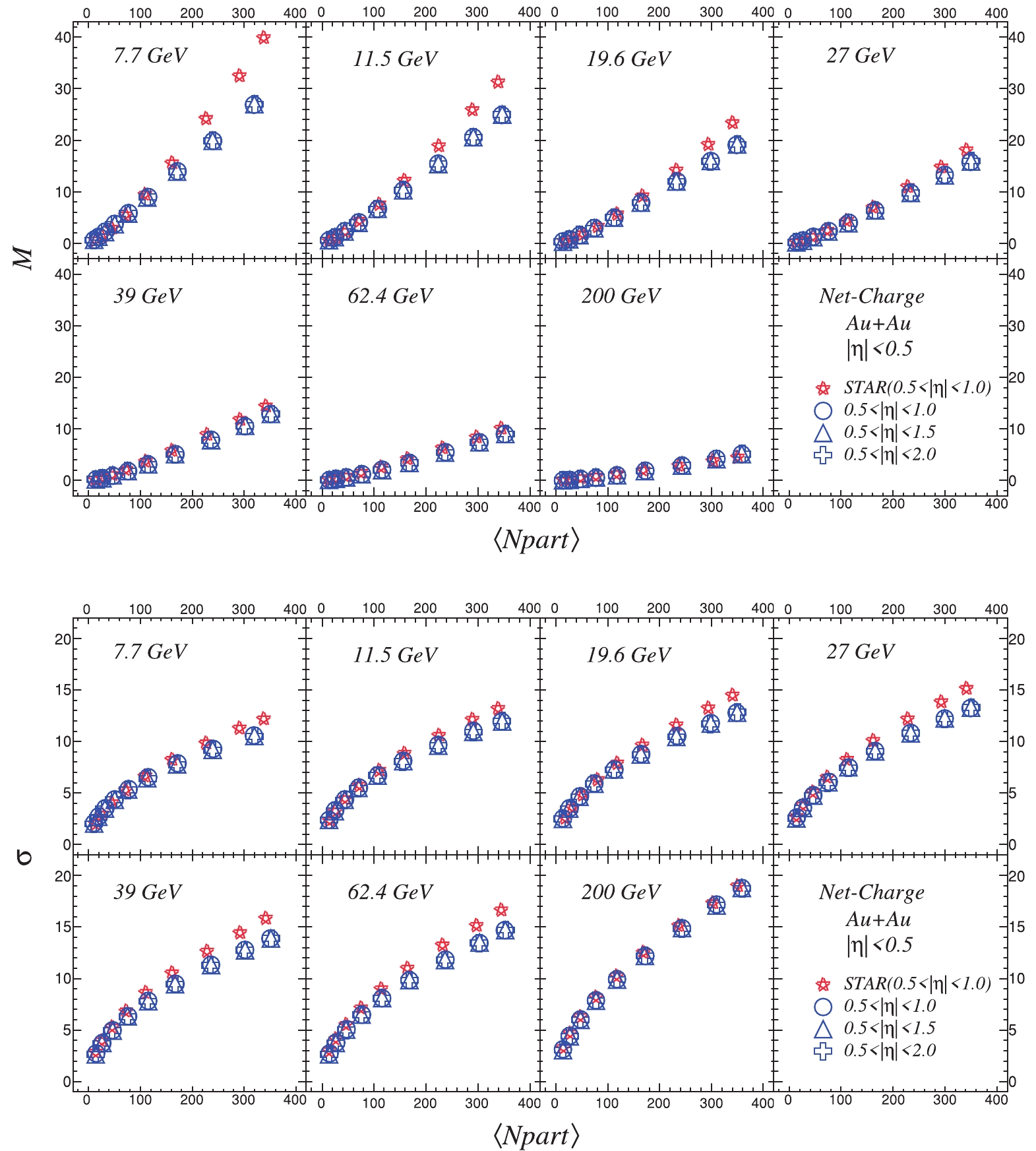 Figure5. (color online) Centrality dependence of mean (M) (top plots) and standard deviation (
Figure5. (color online) Centrality dependence of mean (M) (top plots) and standard deviation (Figure 6 presents the centrality dependence of skewness (S) and kurtosis (
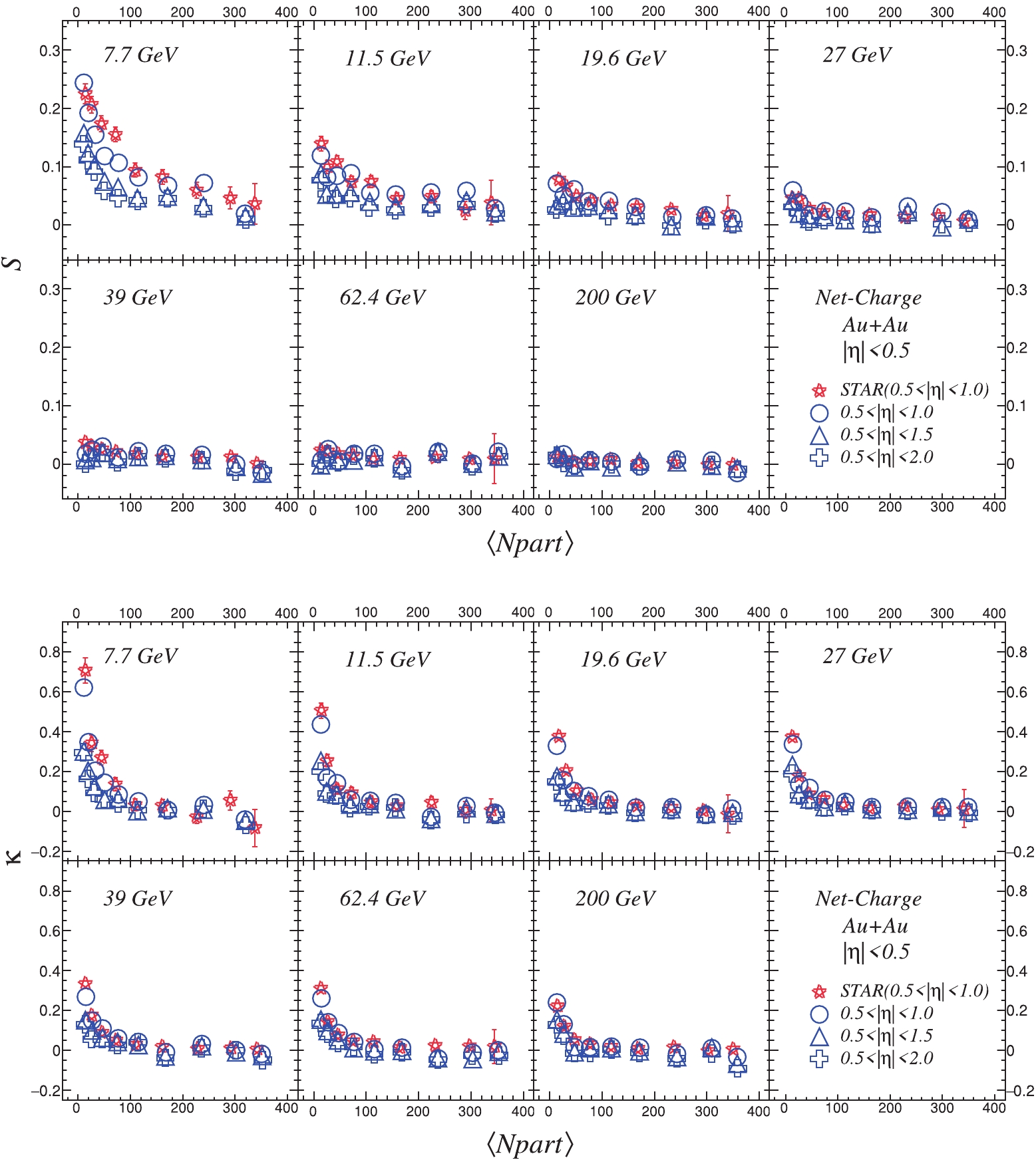 Figure6. (color online) Centrality dependence of skewness (S) (top plots) and kurtosis (
Figure6. (color online) Centrality dependence of skewness (S) (top plots) and kurtosis (Figure 7 presents the centrality dependence of moment products (
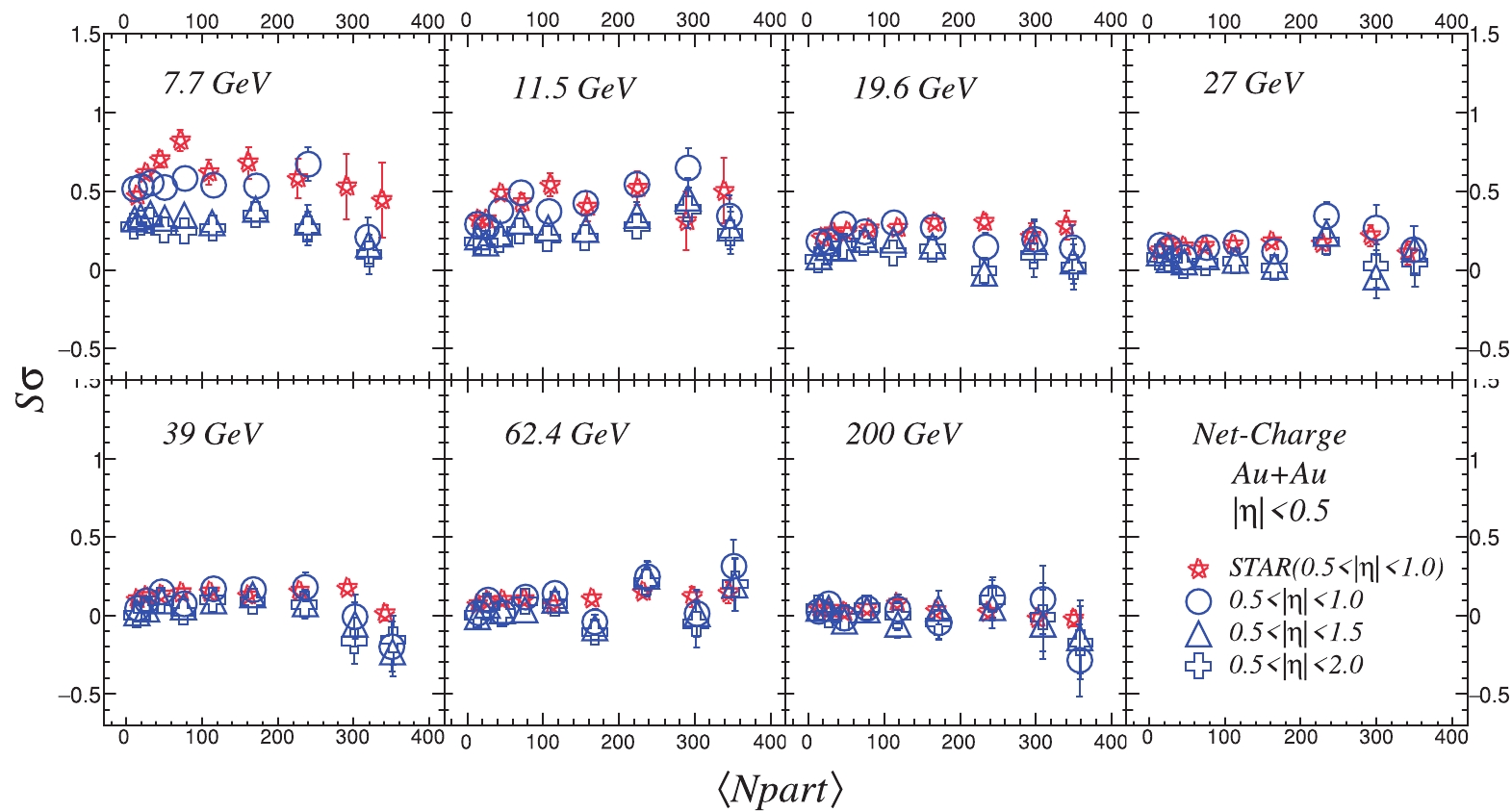 Figure7. (color online) Centrality dependence of moment products
Figure7. (color online) Centrality dependence of moment products Figure 8 presents the centrality dependence of
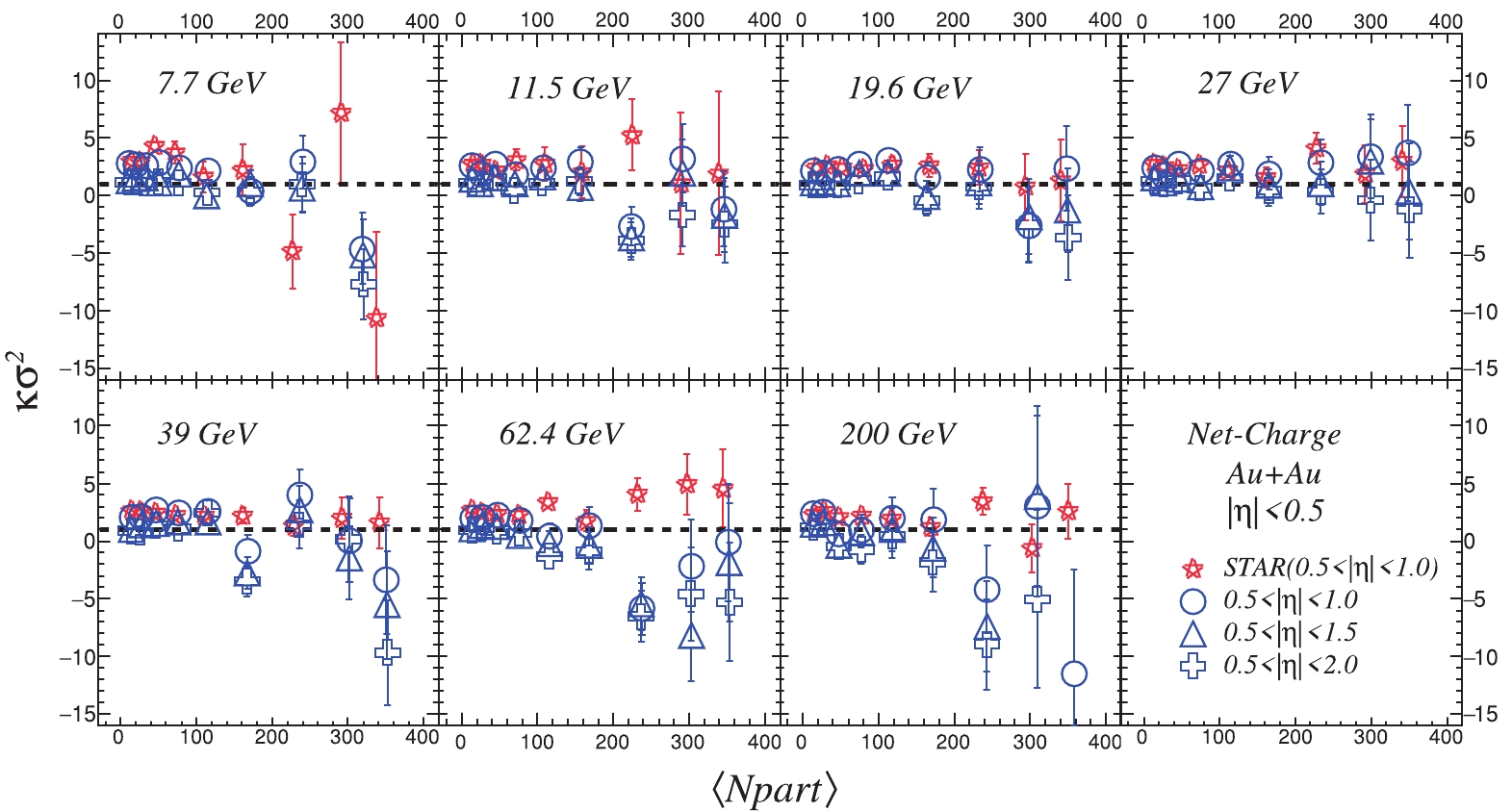 Figure8. (color online) Centrality dependence of moment products
Figure8. (color online) Centrality dependence of moment products 2
C.Energy dependence
As mentioned above, it is believed that moment products, which can eliminate the volume fluctuation effect, are sensitive to the critical fluctuations. Hence, we study the energy dependence of moment products, as presented in Figs. 9 and 10, where both AMPT results, with and without the CBWC, are presented in comparison with the experimental data.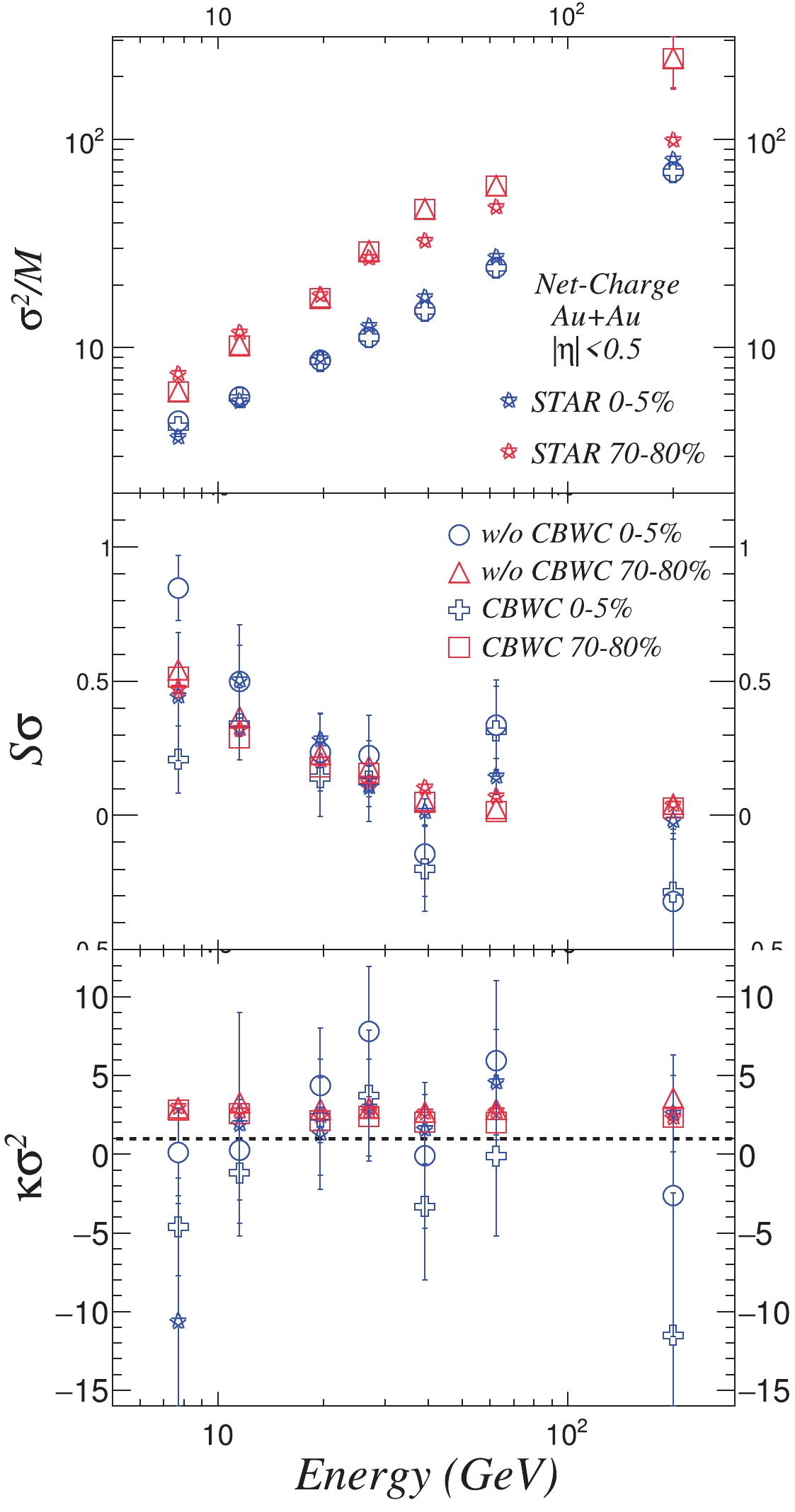 Figure9. (color online) Beam-energy dependence of moment products
Figure9. (color online) Beam-energy dependence of moment products 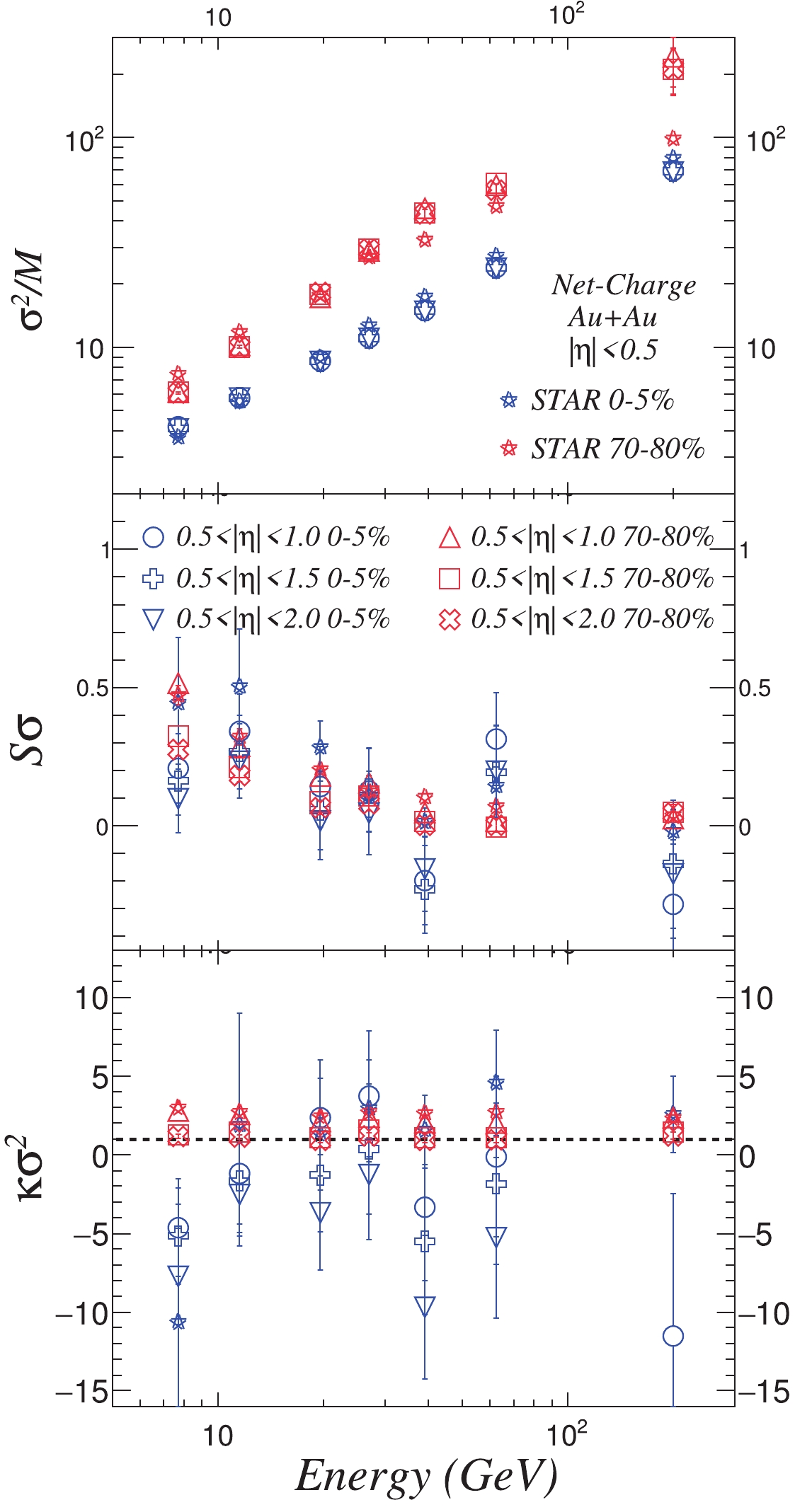 Figure10. (color online) Beam-energy dependence of moment products
Figure10. (color online) Beam-energy dependence of moment products Figure 9 illustrates the energy dependence of the moment products, which include
To study the influence of the CRE on the energy dependence of the moment products, different centrality definitions have been applied. Figure 10 presents the beam-energy dependence of moment products
In general, after considering the CBWC and CRE, the AMPT results of moment products of net-charge multiplicity distribution are consistent with the experimental measurements. No non-monotonic energy dependence is observed, which is not surprising because no QCD critical fluctuations are included in the AMPT model at all.
2
D.Stage evolution
It is well known that heavy-ion collisions are actually a complicated dynamical evolution comprising several important evolution stages. Therefore, it is important to study the stage evolution of moment products, which can help us understand the dynamics of observable fluctuations. This complements the results from the lattice QCD, which basically belongs to a static thermal approach without evolution dynamics. Using the AMPT model, we focus on the moment products at four evolution stages (i.e., initial stage, after parton cascade, after coalescence, and after hadron rescatterings) in Au+Au collisions for two typical energies, 7.7 GeV and 200 GeV.To elucidate the possible contribution from any dynamics to the moments or moment products, a reference of the Poisson baseline is crucially required. To obtain the expected moments of net-charge distribution from two independent Poisson distributions of positively and negatively charged particles, we first calculate
$ \Delta K_2 \simeq 2C_{2}^{(1,1)} \simeq 2 (\langle Q_- Q_+ \rangle- \langle Q_- \rangle \langle Q_+ \rangle), $  | (8) |
$ \begin{aligned}[b] \Delta K_3 \simeq& 3C_{3}^{(2,1)}-3C_{3}^{(1,2)} \simeq 3 (\langle Q_- Q_+^2\rangle- \langle Q_-\rangle\langle Q_+^2\rangle) \\ & -3 ( \langle Q_-^2 Q_+\rangle- \langle Q_-^2\rangle \langle Q_+\rangle) \\& +6 \langle Q_-\rangle(\langle Q_- Q_+\rangle- \langle Q_-\rangle \langle Q_+\rangle) \\ & - 6\langle Q_+\rangle(\langle Q_- Q_+\rangle- \langle Q_-\rangle\langle Q_+\rangle) , \end{aligned} $  | (9) |
$ \begin{aligned}[b] \Delta K_4 \simeq& 2C_{2}^{(1,1)}+6C_{3}^{(2,1)}+6C_{3}^{(1,2)} \\ & +4C_{4}^{(3,1)}+4C_{4}^{(1,3)}-6C_{4}^{(2,2)} , \end{aligned} $  | (10) |
To directly illustrate the two-particle correlation between the multiplicities of positively and negatively charged particles, Fig. 11 presents the AMPT results of
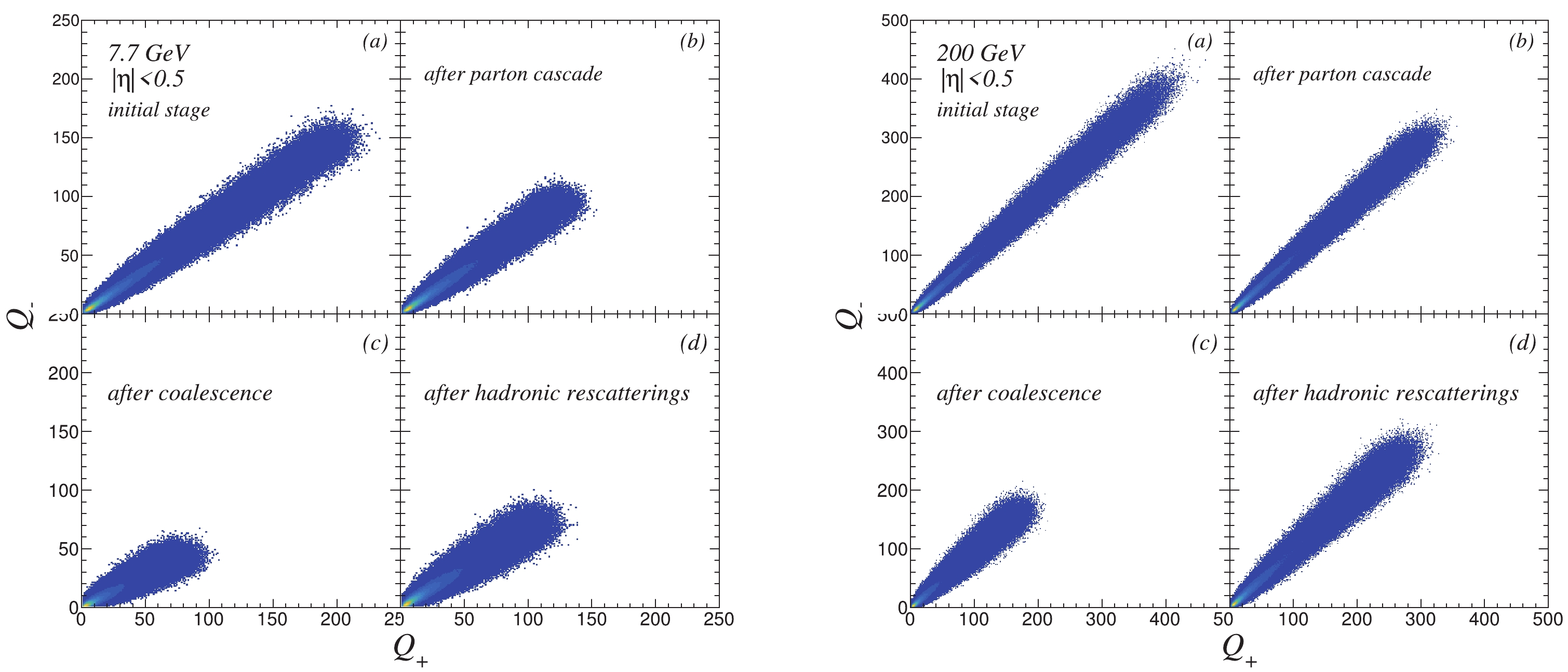 Figure11. (color online)
Figure11. (color online) Figure 12 presents the centrality dependence of the moment product
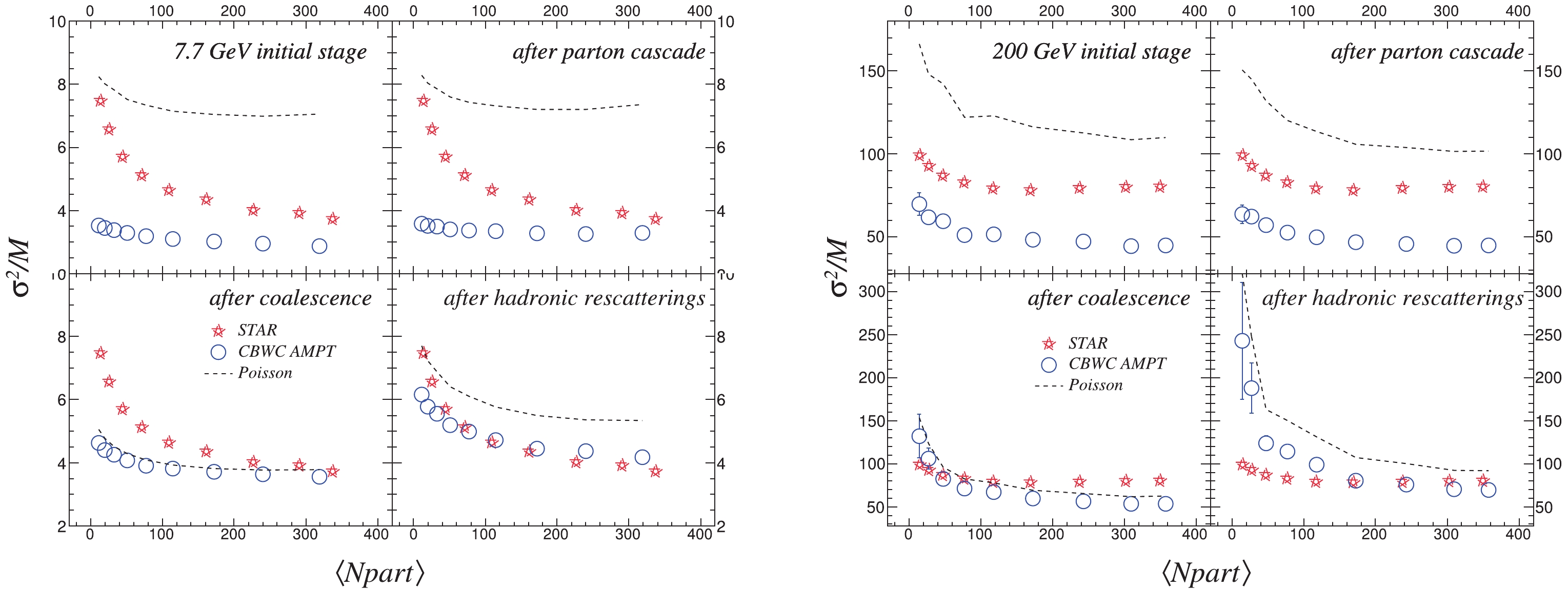 Figure12. (color online) Centrality dependence of moment product
Figure12. (color online) Centrality dependence of moment product Figure 13 presents the centrality dependence of moment product
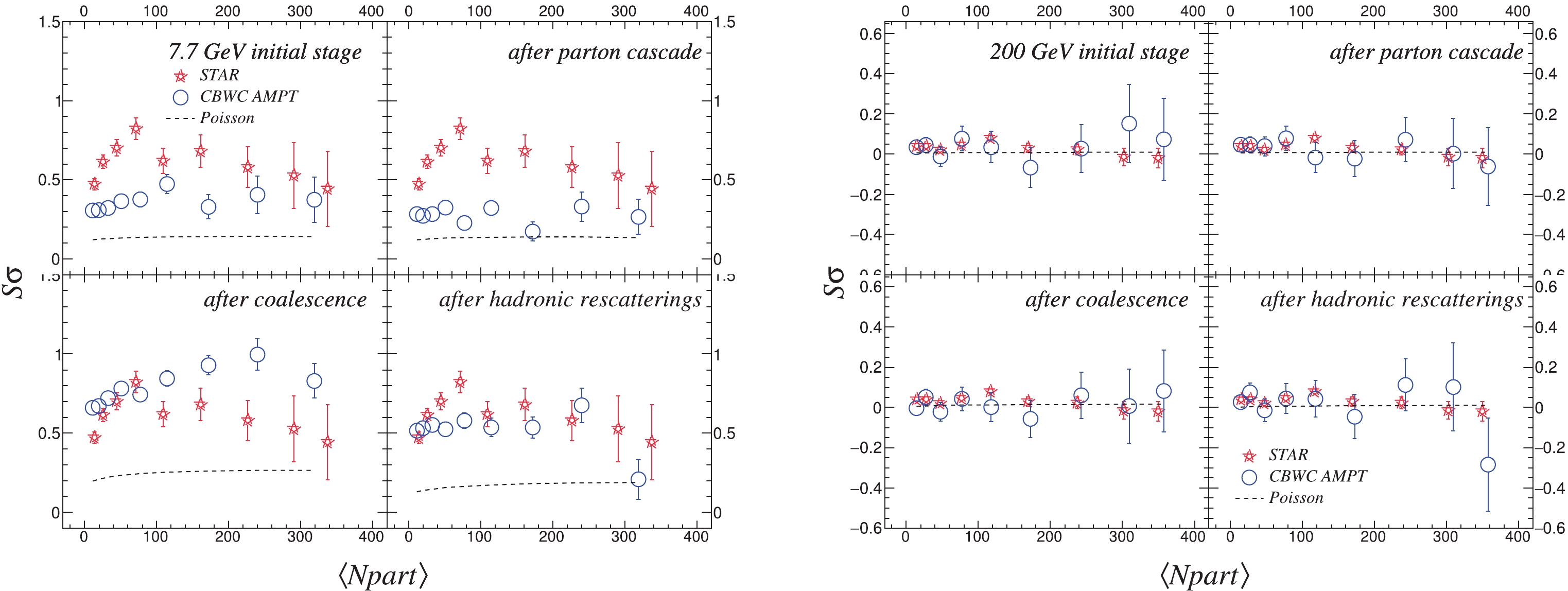 Figure13. (color online) Centrality dependence of moment product
Figure13. (color online) Centrality dependence of moment product Figure 14 presents the centrality dependence of the moment product
 Figure14. (color online) Centrality dependence of moment product
Figure14. (color online) Centrality dependence of moment product It is important to mention that the hadron resonance gas (HRG) model [56] has indicated that resonance decays could play an important role in influencing these moment products, which enhance
